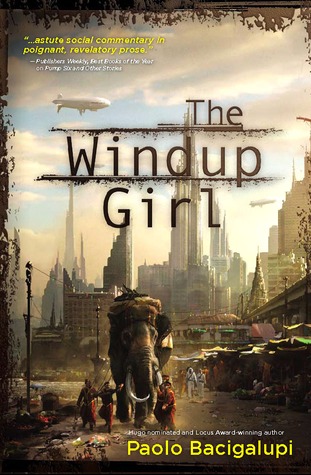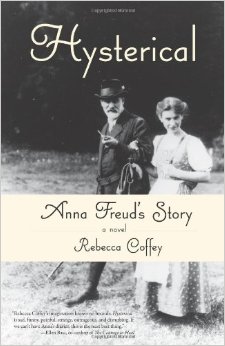![30653706[1]](https://brsanders.files.wordpress.com/2018/02/306537061.jpg?w=584)
Notes on Diversity/Inclusion:
The Book of Joan seems to have a very complicated relationship to marginalization and oppression, and it doesn’t seem to realize it. This is a book that is trying to say something about the nested issues of gender oppression and environmentalism, but because the story takes place on a space station, and because there are issues of access getting to that space station, the cast is largely wealthy and largely (literally) White.
This is a book full of very strange contradictions. For example, queerness is represented–Trinculo is a queer man, and Joan and Leone are clearly in love. However, none of those characters are in a satisfying relationship. Trinculo is queer and obsessed with what he’s lost, and ultimately becomes a tragic/fallen queer character. Joan and Leone are a pair of untouched and intact people, in love, but they can’t consummate their relationship because of Joan’s otherworldy abilities. So, even though queerness is threaded through the book, no one is getting what they want. No one is happy. The way these queer characters are written feels regressive.
Content Warnings for Book:
Oh, wow, so many:
- Transphobia, in multiple ways, at multiple times, by multiple characters. IT WAS A THING.*
- Racism in the form of literal colorblindness–the ascendant denizens of the space station CIEL all have paper-white skin, and one of the protagonists, Christine, remarks that this transformation renders race a meaningless construct. I don’t think that’s actually true at all.**
- Sexualized and gendered brutality more than once. Women’s bodies throughout the book are a site of violence.
- There is at least one especially vicious beating of a queer man, and it happens, in my reading, at least partially because of his sexuality.
- Christine burns text into her skin, and the scarification she practices is both ritualized and commodified. There are scenes throughout the book of her practice where she describes the act with extremely explicit and lurid detail, so if you have a sensitive stomach go in knowing. There is also an element of this thread of the text that really treads a line of self-harm in my reading of the book.
Review:
Blurb (from Goodreads):
In the near future, world wars have transformed the earth into a battleground. Fleeing the unending violence and the planet’s now-radioactive surface, humans have regrouped to a mysterious platform known as CIEL, hovering over their erstwhile home. The changed world has turned evolution on its head: the surviving humans have become sexless, hairless pale-white creatures floating in isolation, inscribing stories upon their skin.
Out of the ranks of the endless wars rises Jean de Men, a charismatic and bloodthirsty cult leader who turns CIEL into a quasi-corporate police state. A group of rebels unite to dismantle his iron rule—galvanized by the heroic song of Joan, a child-warrior who possesses a mysterious force that lives within her and communes with the earth. When de Men and his armies turn Joan into a martyr, the consequences are astonishing. And no one—not the rebels, Jean de Men, or even Joan herself—can foresee the way her story and unique gift will forge the destiny of an entire world for generations.
A riveting tale of destruction and love found in direst of places—even at the extreme end of post-human experience—Lidia Yuknavitch’s The Book of Joan raises questions about what it means to be human, the fluidity of sex and gender, and the role of art as means for survival.
Reading The Book of Joan was an immensely strange experience for me. I enjoyed this book, and I hated it.
Let me explain.
Lidia Yuknavitch is a great writer. She writes with passion and urgency and fluency. I could not stop reading this book even as it became clear that this book was Definitely Not For Me. I just loved the way she wrote. I loved the way she put sentences together. I loved the way she structured the book. She does this fantastic thing where she starts the book in first person in Christine’s POV, then switches to Joan’s POV in third person, then switches to Christine again, this time in third person, and then ends the book in Joan in first person. It worked! I could not believe that it worked, and I loved it!
But the content of the book itself was not good. It was like walking through a restaurant, and everything looks and smells amazing, and then you realize it’s a seafood restaurant and, oops, you’re allergic to shellfish.
The thing about The Book of Joan is that it was trying to have a conversation with me that I was deeply uninterested in having. Yuknavitch is trying to talk about sex and gender and the primacy of binaries in both of those things, and their relationship to environmentalism, in ways that I am fundamentally sick of hearing about. This is an allegorical, and somewhat satirical book, and for a book like that to work, you have to be willing to engage with its philosophical underpinnings. The philosophical underpinnings of The Book of Joan seem largely rooted in lesbian separatism, trans-exclusionary radical feminism, and literally no understanding of asexuality at all.
Leaving aside that the actual mechanics of the plot (CIEL, the rapid mutation of humanity to shed genitalia, etc) do not make sense and were not adequately explained, the book overlooked the actual real-life fluidity of gender and sexuality, despite what the blurb said.
- In a world where virtually all people suddenly have androgynous bodies, everyone is still using binary gender pronouns. Why? And also, do no non-binary people exist, either before or after? Yes, I understand that the move to this new body cause Christine dysphoria, but the move to this new body would actually remove a lot of my dysphoria! Nothing like this was explored at all in the book.
- Was no one asexual or aromantic on CIEL? These people were obsessed with having sex.*** There was truly no one who was like “oh, well, no worries.” COME ON.
- Besides that, there’s more than one way to explore one’s sexuality beside with genitalia. Think broader.
This is not even getting into my actual plot questions, which are legion. The big issue was that this book was deeply transphobic. Joan, the hero of the book, is the type to talk about “womb magic.” The main villain is eventually revealed to be a transgender man–and after the reveal, is gleefully deadnamed and misgendered for the rest of the book. The horrific acts he metes out are directly linked in the text to his hatred of women and his own body. This is a book that made me, as a reader, feel targeted by the text itself.
Takeaway & Rating:
The Book of Joan is a glorious hot mess of a book. Yuknavitch is a talented writer, but her ideas about gender and sexuality are outdated, and her play at allegory left me cold.

*Again, I really cannot in good conscience recommend this book to others with its handling of trans issues.
**Take, for example, people of color who are also albinos. Race is, of course, about pigmentation, but it’s also about far more than pigmentation, and only a white writer would think that literally whitewashing all bodies would eliminate racism.
***One of the Plot Questions I had, and maybe it was explained and I missed it, was that Jean De Men forbade everyone on CIEL from banging For Reasons, but I don’t know what those reasons were?? So, no one had junk, but wanted to bang, but COULDN’T, so it was VERY FRAUGHT. But I know had I been on CIEL that a) I would have been way less dysphoric than I am this moment and b) I would have been the only one there with any damn chill.








